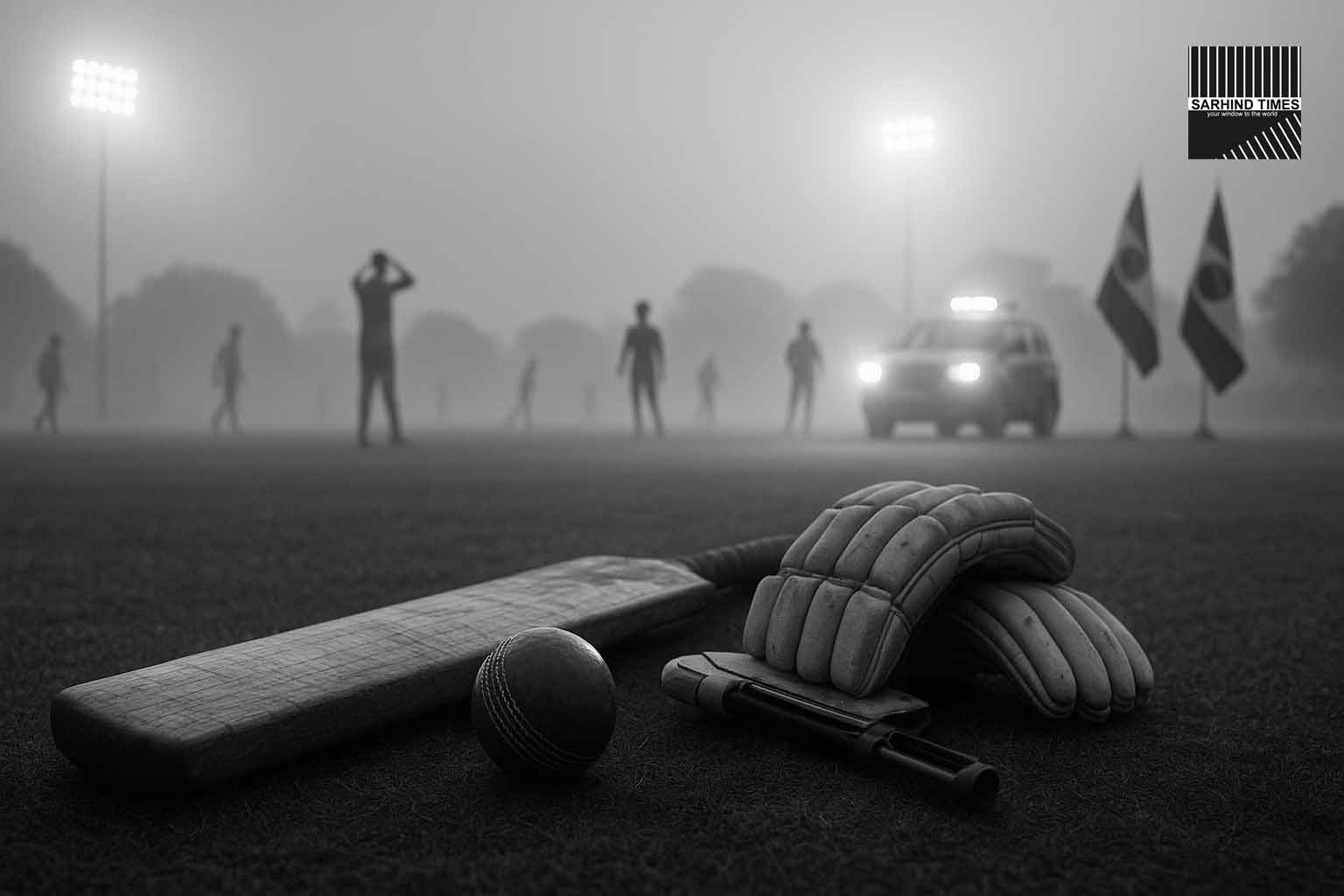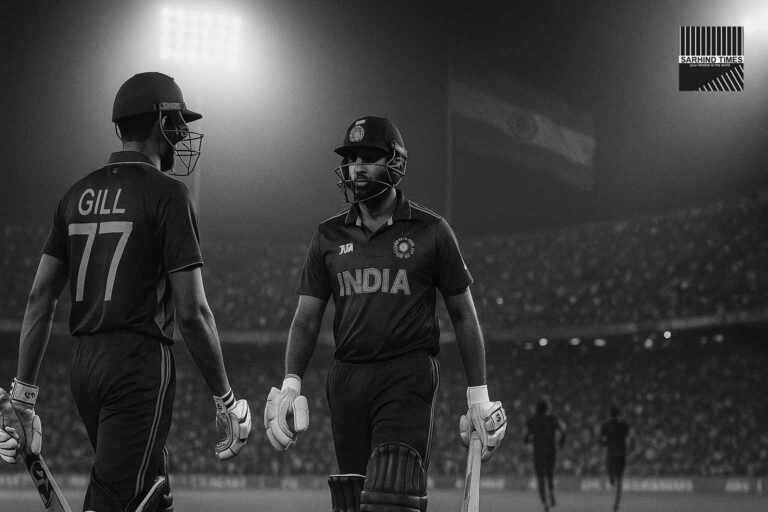By Sarhind Times Bureau | New Delhi | October 15, 2025
Introduction: The 91st Season of India’s Longest-Running Cricket Tradition
As the sun rises over the autumn fields of Indian cricket, the Ranji Trophy 2025–26 season begins today — marking the 91st edition of India’s premier first-class cricket tournament. The opening day brings with it not just the familiar sound of leather on willow, but also renewed anticipation around player form, fitness, and temperament as India’s selectors prepare for a hectic international calendar over the next year.
The Board of Control for Cricket in India (BCCI) confirmed that this season will feature 38 teams divided across Elite and Plate groups, with matches spread over nine weeks and venues carefully distributed to balance weather, pitch conditions, and travel logistics.
Beyond the numbers, however, the Ranji Trophy remains what it has always been — the heartbeat of Indian cricket, the crucible where reputations are forged, and where every century, spell, and session can change a career.
Historical Context: A Legacy That Defines Indian Cricket
First played in 1934, the Ranji Trophy — named after Maharaja Ranjitsinhji of Nawanagar, India’s pioneering Test cricketer — is older than India’s independence itself.
Over the decades, it has served as the nursery for Indian Test talent, producing legends such as Sunil Gavaskar, Rahul Dravid, Anil Kumble, Sourav Ganguly, and Virat Kohli.
While T20 and franchise cricket dominate today’s conversations, the Ranji Trophy endures as a sanctuary for purists — a format that rewards technique, concentration, and character.
“The Ranji is not just a tournament; it’s a mindset,” said former India coach Ravi Shastri. “You play it to understand patience, to earn runs the hard way, and to learn what it takes to last four days under pressure.”
This year’s competition, starting mid-October instead of December, reflects BCCI’s new scheduling approach — designed to ensure seamless integration with India’s Test and A-team tours, providing selectors real-time data for national considerations.
Tournament Structure: What’s New This Year
The 2025–26 Ranji Trophy maintains its Elite and Plate group structure:
- Elite Groups: 32 teams divided into four groups (A–D).
- Plate Group: 6 developing teams competing for promotion next season.
- Format: Each team plays six league matches, followed by quarterfinals, semifinals, and the final.
- Duration: Four-day games; final to be held in February 2026.
A key change this year: enhanced central data tracking, with player performance automatically synced to BCCI’s Performance Analytics Dashboard — a system that captures metrics like strike rate in different sessions, batting control percentage, seam position efficiency, and slip-catching success rate.
“Selectors now rely heavily on quantitative data from domestic games,” said a senior BCCI analyst. “The Ranji Trophy is essentially a living laboratory for player development.”
Pitch Focus: The Battle Beneath the Ball
The past few seasons have seen growing debate over pitch quality and over-prepared home advantage, leading to exaggerated results in low-scoring games.
The BCCI’s curator panel has issued clear directives this season: pitches must feature a fair grass covering, support balanced seam-spin movement, and sustain four days of competitive cricket.
State associations like Mumbai, Tamil Nadu, and Karnataka have promised consistency, while traditionally spin-friendly venues such as Indore and Rajkot are experimenting with mixed soil content to maintain bounce deeper into matches.
“A good pitch should test both technique and temperament,” said Venkatesh Prasad, former India pacer and pitch committee member. “We don’t want 150-all-out matches; we want contests that produce tomorrow’s Test cricketers.”
Players to Watch: The Road to Redemption and Recognition
This Ranji season doubles as a selection audition for several cricketers on the fringes of national contention.
🏏 Top-Order Batters:
- Prithvi Shaw (Mumbai): Making a comeback after a quiet IPL season, Shaw’s red-ball form could redefine his career trajectory.
- Yashasvi Jaiswal (Mumbai): Though established in Tests, he returns to regain touch ahead of India’s overseas schedule.
- Rajat Patidar (Madhya Pradesh): A consistent domestic performer whose middle-order stability remains invaluable.
⚡ Fast Bowlers:
- Mohammed Siraj and Umran Malik: Monitored for workload management, with focus on long spells and reverse-swing capability.
- Arshdeep Singh: Transitioning from white-ball specialist to multi-format hopeful.
🌀 Spinners:
- Kuldeep Yadav and R Sai Kishore: Expected to dominate on turning tracks, fine-tuning variations before the Test series against England.
Selectors’ Lens: Data Meets Diligence
The All-India Senior Selection Committee, led by Ajit Agarkar, will monitor Ranji performance not just through traditional averages but through session-wise control data, impact ratings, and pressure-handling indices introduced last season.
Each state team has been instructed to share match analytics within 48 hours, feeding directly into the BCCI’s central performance database.
“Consistency in domestic cricket defines Test readiness,” Agarkar said recently. “One big hundred doesn’t earn you a spot anymore; sustained control and adaptability do.”
Technology and Broadcast: The Digital Leap
For the first time, Ranji Trophy matches will stream on multiple digital platforms, including JioCinema and Disney+ Hotstar, with regional language commentary and analytical overlays.
This expansion aims to bring domestic cricket closer to fans in Tier-2 and Tier-3 cities, often the hometowns of the players themselves.
“The future fan base of red-ball cricket lies beyond the metros,” said BCCI’s media director. “With analytics graphics and player heat maps, we’re making first-class cricket as immersive as the IPL.”
In addition, select venues will feature Hawk-Eye systems for ball-tracking and AI-powered fielding analysis, making the Ranji Trophy one of the most data-driven domestic tournaments globally.
Financial Model: Incentives for Performance
To elevate motivation and professionalism, the BCCI has revised match fees and prize pools:
- ₹2.5 lakh per match for senior players.
- ₹1.25 lakh for U-23 players.
- Additional performance-linked bonuses for centuries, five-wicket hauls, and captaincy milestones.
State boards have also introduced contract categories, similar to IPL teams, ensuring that promising youngsters receive year-long retainerships and mental conditioning support.
Coaches’ Corner: Testing Temperament Early
Coaches across the circuit believe that early-season Ranji matches, played under slightly humid conditions and on slower surfaces, are ideal for assessing patience and adaptability.
“It’s not about aggression but endurance,” said Chandrakant Pandit, Vidarbha’s head coach. “The best players find rhythm even when the ball isn’t doing much. That’s what separates domestic champions from international ones.”
Many teams, including Delhi, Saurashtra, and Kerala, have added sports psychologists and data analysts to their support staff for the first time, a reflection of Indian cricket’s modernisation even at state level.
State Focus: The Battle for Supremacy
- Mumbai: 41-time champions aiming to reclaim dominance after a decade-long title drought.
- Saurashtra: Defending champions, known for gritty all-round consistency.
- Karnataka: Balancing youth and experience, with Mayank Agarwal back at the helm.
- Tamil Nadu: Strong bench of spinners, eyeing turnaround after two underwhelming seasons.
- Delhi: Banking on young batting core led by Yash Dhull and Ayush Badoni.
Emerging Plate teams like Manipur, Meghalaya, and Mizoram are also gaining attention for grassroots progress, proving the Ranji’s growing geographic reach.
Physiological & Workload Monitoring
With several players juggling multiple formats, the National Cricket Academy (NCA) will oversee workload management in real time.
Pacers in particular will be tracked for bowling volume, recovery cycles, and stress patterns, feeding into the Player Health Index used by selectors and team physios.
“The Ranji season is long and demanding,” said VVS Laxman, NCA Director. “If managed correctly, it becomes the perfect foundation for India’s Test calendar.”
What the Ranji Trophy Means Today
While cricket’s shorter formats have become cultural phenomena, the Ranji Trophy remains the soul of Indian cricketing ethos — where the game’s truest virtues still hold.
It’s where young cricketers learn that technique triumphs over timing, where mental toughness matters more than strike rates.
“You can’t fake success in red-ball cricket,” said Rahul Dravid, India’s head coach, in a recent interview. “It reveals character in ways no T20 can.”
As the first deliveries are bowled this morning, thousands of aspiring cricketers across the country will tune in — not just to watch, but to dream.
Conclusion: The Real Test Begins
The Ranji Trophy 2025–26 isn’t just another domestic season — it’s the foundation of India’s international future.
Every run scored, every over bowled, every catch held or dropped will echo beyond these four-day games into the corridors of selection meetings and the hearts of fans who still believe in the poetry of patience.
As the red ball swings and spins across 38 venues today, Indian cricket returns to its oldest question — not who can entertain, but who can endure.
And for the players who will walk out under the gentle October sun, this isn’t just a match.
It’s an audition for greatness.
#RanjiTrophy #IndianCricket #DomesticCricket #RedBall #BCCI #CricketIndia #SportsNews #SarhindTimes #CricketSeason #PlayerDevelopment























+ There are no comments
Add yours